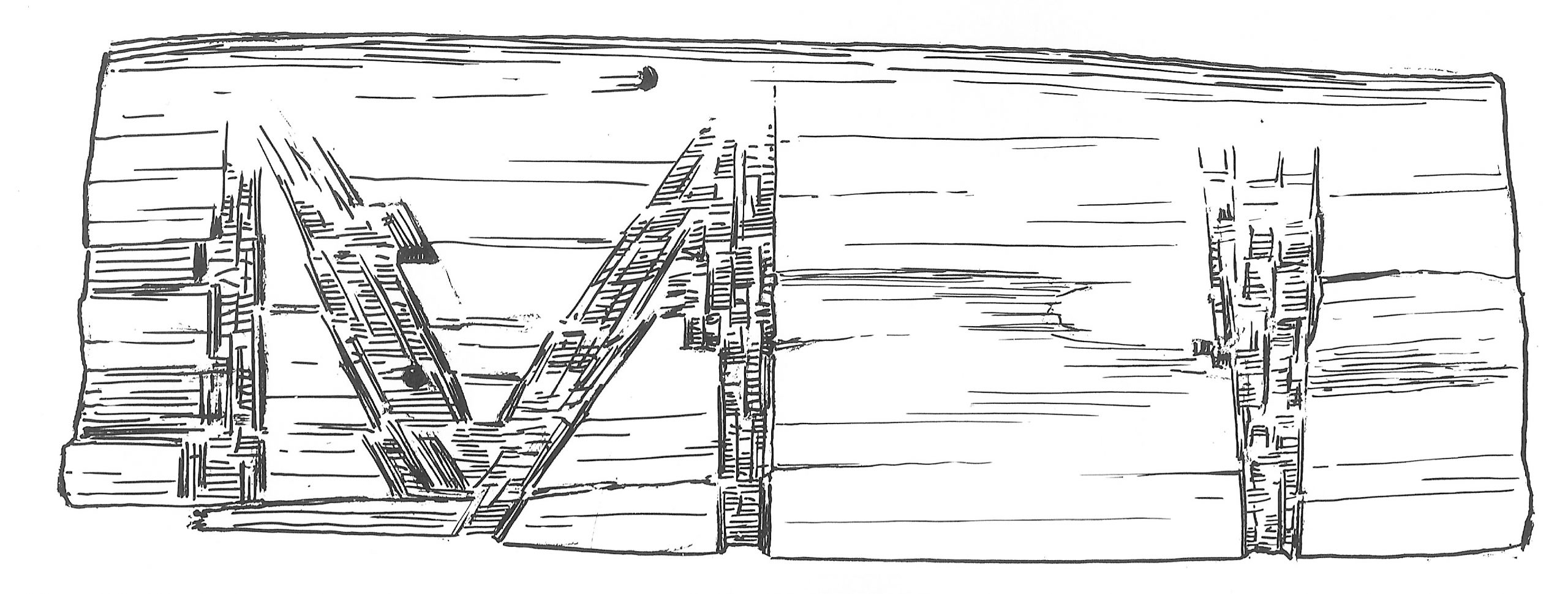CHARACTER ACTOR: WHAT ROLES DOES DRIFTWOOD PLAY?
When my dad had a free moment in the evenings, he would often carve animals from wood for us children with a knife.
– Valgeir Benediktsson, driftwood carpenter and craftsman –
Driftwood is a ubiquitous actor in Iceland’s history and culture. Even colonization started with a special piece of driftwood: The first settler Ingólfur Arnarson threw the high-seat pillars – parts of a wooden Viking chair – from his Norwegian farmstead overboard his ship, trusting his pagan gods to use the currents, guiding him to fertile lands. The driftwood washed ashore in Reykjavík where he built his farm in 874.
Driftwood became a key resource for construction material and household items for centuries. If it hadn’t been for driftwood, Iceland might have even proved uninhabitable. Many place-names reflect its omnipresence across the coastlines – e.g. Keflavík refers to “log of driftwood”, Bolungarvík to “trunk” and Rekavík to “drift”. The oldest law texts from the 13th century such as Grágás and Jónsbók contain extensive descriptions of driftwood rights and punishment for offenses which remained largely unchanged until the 18th century.
The most basic law states that the owner of the farmland owned the driftwood that washed ashore. The owners had to have personal driftwood marks, usually a combination of lines resembling runes. The marking allowed the owner to claim his logs if they were carried back into the sea and washed ashore someone else’s beach. By-passers in need were allowed to make use of driftwood for repairs but had to give notice at the next settlement and repay the landowner for the wood’s value. Stealing driftwood was usually fined but could also lead to more severe punishment depending on the damage. Throughout Iceland’s history, farms with driftwood-bearing beaches spread across its Northern and Western shores and parts of the East. Religious institutions owned the majority of driftwood easements quite early on.

Driftwood has to be collected right away and be dried properly, otherwise it will start to rot. Driftwood farmers would judge the quality of the timber by its look, touch and smell. Another technique is to listen to the wood – one farmer would knock on one end of the trunk with a stick, a piece of iron or a stone and another would listen on the other end. Solid wood has a high-pitch, rotten wood a darker sound. Along its journey across the Arctic, salt from seawater impregnates the driftwood and hardens it. Usually, driftwood farmers sort their timber by length and quality and use only bad logs as firewood. Although nowadays driftwood is not as heavily utilized anymore, it still plays a role as a building material in driftwood-rich areas like Strandir in the Westfjords, or Skagi in the Northwest and is widely used for fencepoles, landscaping and arts.
But driftwood also plays its part in Norse mythology and different sagas. According to Snorri’s prose Edda, god Oðinn and his brothers created the first humans – Askr and Embla – from two pieces of driftwood they found on the beach. Askr and Embla received a gift from each of them: Oðinn gave them life, Hænir understanding and from Loður they received their senses and appearance. The creation myth is also told in the poetic Edda – and its cover is even hewn from driftwood. Sturlunga saga describes how skilled craftsmen from Strandir travelled the country and sold household items made from driftwood. Craftsmanship was attributed with magic and magical skills. Grettis saga, however, takes a more violent turn – when the outlaw Grettir tries to chop a bewitched piece of driftwood with his axe, he injures himself severely and eventually dies from the infected wound.
